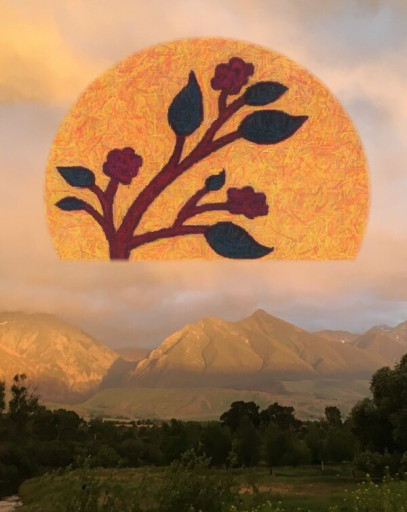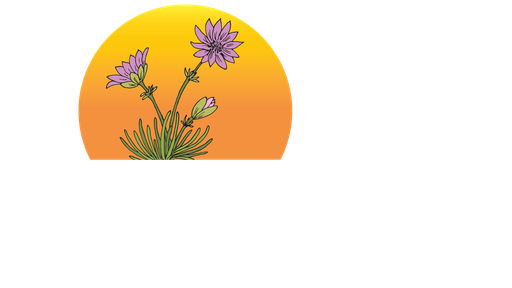

1944
Benjamin
2020
Benjamin Curry Dink Bruce
May 12, 1944 — September 5, 2020
Benjamin Curry 'Dink' Bruce, 76, passed away peacefully after a long illness on Saturday, September 5, 2020. Dink passed at his home in Livingston, Montana, in the company of his loving nephew Kenny, and his dear friends Linda and Bill Klipp. Dink was born in San Francisco on May 12, 1944, to Laura Elizabeth 'Betty' Moreno Bruce and Telly Otto 'Toby' Bruce. Dink loved to say "I left my umbilical cord in San Francisco, but no one would argue he wasn't a fifth-generation Conchhis family moved from Green Turtle Cay in the Bahamas to settle in Key West during the 1830s. In the 1850s, Dink's great-great-grandfather Benjamin Curry, brother of William Curry, Florida's first millionaire, built the family house at 610 Southard, which included the carriage house that Dink converted to his home in the 1970s. Dink's ancestors were an integral part of the history of Key West, with some serving positions as Mayor, Postmaster, U.S. Marshal, and City Engineer. Some might say that Dink was a kind of unofficial mayor, regularly telling the city government what it needed to do, and when. Dink's mother, Betty, was a painter and cook of great talent who served for twenty years as the first local historian at the Monroe County Library, establishing the current Florida History Department. Toby Bruce, born in Arkansas, first came to Key West with Ernest Hemingway as a carpenter and handyman. The relationship grew into a lifelong friendship between Ernest, Toby, and Betty, continuing until the writer's death in 1961, when Toby served his friend for a final time as one of Ernest's pallbearers. Dink made his second home in Livingston, MT for almost forty years, typically arriving in time for the Fourth of July and leaving when the weather turned in October, thereby missing at least a bit of hurricane season, but always fleeing south "before the snow flies." He loved Montana, but he was of the islands, close to the sea both as a matter of tradition, given his father's experience in the Gulf, and of soul. According to Ben Trevor, one of Dink's oldest friends, Dink learned celestial navigation from a Danish teacher as a Boy Scout, and he spent most days on the water, even as a teenager. Trevor describes Dink's four years with the Coast Guard, which gave him a naval sense of order, as 'the only W-2 he ever received.' Recently, while talking about that period with his niece Toby, Dinksaid he joined the Coast Guard to save people rather than kill people during the Vietnam War. Dink used his knowledge of the water, the weather, and the islands as a marine coordinator for numerous movie productions. No one, according to the writer Jim Harrison, knew the flats around the Keys better than Dink. He helped many people begin to explore that world, including Harrison's friends Tom McGuane and Russell Chatham, whom he followed to Montana, becoming lifelong friends with the three of them and many others in Livingston. Dink didn't fish but loved pulling people out onto the water for a run to the Marquesas. 'If he called you to go out on the boat, you could not say you couldn't go because you had to do your laundry or go to the grocery store,' says his friend Lucy Buffett. 'That was totally unacceptable. He would simply never ask you again.Because he felt the opportunity to go out and explore the indescribable beauty of cruising the Keys should never be missed.' For many years Dink traveled the roads back and forth between Montana and the Keys with his dogs, Teak One and Teak Two, stopping along the way to see friends. He increasingly included Cuba in his travels. He collected old kids' baseball gloves and had them oiled and re -laced to bring to the island; he took friends to Hemingway's Finca Vigia, where they were allowed private tours. He was fascinated with Cuban refugee boatschugswhich he found and photo-documented for a short film. Dink himself could repair and repurpose anything and felt that the makeshift nature and ingenuity of these vessels, and the bravery and desperation of the people who set out in them, was well worth celebrating. Dink's skills as a renaissance man were inherited from his parents, both of whom were artists and craftspeople. Dink worked in many different mediums, most notably photography, wood, metal, and paint. He was a jack-of-all -trades, a collector, a raconteur, and a consummate boatman. He was open to the new, but a man of ritual: depending on the decade, in Livingston, afternoons during his last decade were spent (often with his friend John Fryer) at Glenn Godward's bar, with a later stop at the Bistro. Dink loved to take frequent day trips to Virginia City, where he worked on the film The Missouri Breaks, always stopping at his friend Mike Pollacks Fish Bar in McAllister, MT, on the way home. In Key West, beyond the legendary Outhouse parties, he held court on a regular schedulebreakfast with David Wegman or other friends at Harpoon Harry's, lunch at the Yacht Club, sunset or dinner at Salute or Louie's or La Trattoria, always at the center of a multiplying audience. A friend describes walking around town with him as ' like strolling with the mayor, street-show impresario, and straw-that-stirs-the-drink all in one.' He was a local legend, but most of his stories were absolutely true. Though Dink may not have gotten his name from Ernest Hemingway, he certainly logged time with the man. One story, from William McKeen: ' Bruce recalled that when he was assigned in high school to write a paper on the 'true meaning' of The Old Man and the Sea, he went home and asked a visiting house guest for help. 'Well, Dink,' Hemingway began. ' I took the Pilar out to go fishing. And I knew this man in Cuba who went fishing and lost his big catch to the sharks. That's what it 's about.' Bruce delivered his report to his teacher, who told him he obviously knew nothing about Hemingway and his work.' Twenty years ago, Dink and his sister Linda began a project to catalog a treasure trove of Hemingway's papers and memorabilia recovered from a storeroom behind Sloppy Joe's by their parents Toby and Betty along with Mary Hemingway in 1961. They took on the role of archivists to research, protect, and preserve the collection, ensuring that current and future Hemingway scholars will continue to have access to the collection. The many interesting finds in the collection include original Walker Evans photographs from Cuba and an original short story written by Hemingway as a schoolboy. Dink often said he felt his job in this world was to introduce interesting people to interesting people. This was possibly his greatest talent, the ability (in the words of another old friend) . . . ' to make the hundreds of folks who crossed his path think that each one was very special to himbecause they wereand to connect all these truly interesting, funny, accomplished, fascinating, eccentric, artistic,and even weird people with each other.' Dink knew and befriended everyone from Charles Kuralt to Hunter S. Thompson, Jeff MacNelly to David Halberstam, Phil Caputo to Mike Peters, Margot Kidder to Peter Fonda, Shel Silverstein to Jimmy Buffett to Carl Hiaasen. Though he loved to tell stories about the people he'd known and things he'd done, unlike most people who spent serious time on a bar stool, he always asked about you, about how things were, and how he could help; despite the cocktail count, he always remembered your answer. And despite the endless tasks he did on his friends' behalf, he always, as he said a week before his death, ' did what the f --- I want.' Dink was preceded in death by his mother and father, and his sister Linda Kate Bruce Carter. He is survived by his nieces Toby Lynn Blacow and Karen Elizabeth Carter Davis, nephew Kenneth Michael ' Kenny' Blacow, and great-nephews Benjamin Curry Blacow and Dylan Grant Strasser. He is survived, as well, by thousands of friends. Future celebrations will be held in Livingston and Key West when the risk of the pandemic lessens. Anyone wishing to acknowledge the place that Dink held in their hearts can make a contribution to one of Dink's favorite causes. Two of note are the Livingston Community Closet and Plant a Million Corals in the Florida Keys. During his last year, Dink was lovingly cared for by his niece Toby and many friends. The family would like to thank Livingston Healthcare's Dr. Henry Piango, and would especially like to thank Linda Klipp, Heidi Sorenson and Jen Eames, who cared for Dink as loving sisters instead of friends, and his friends and 'adopted' brothers, Michael Sanders and Michael Mount, who made his final months and weeks more comfortableFranzen-Davis Funeral Home and Crematory has been entrusted with arrangements.
To order memorial trees in memory of Benjamin Curry Dink Bruce, please visit our tree store.
Photo Gallery
Guestbook
Visits: 131
This site is protected by reCAPTCHA and the
Google Privacy Policy and Terms of Service apply.
Service map data © OpenStreetMap contributors


